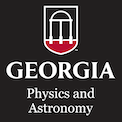Professor Leidong Mao of the University of Georgia Faculty of Engineering will be presenting his talk entitled "Magnetic Liquids for Lab-on-a-Chip Applications."
Magnetic liquids (stable colloidal suspensions of magnetic nanoparticles), also called ferrofluids, offer attractive alternatives to moving mechanical components in industrial machinery. When made biocompatible, they are also used in dilute forms as contrast agents for magnetic resonance imaging, or in drug delivery platforms. Recently, we have proposed and begun implementing a series of micro-scale pumping, separation, mixing, particle/cellular manipulation, and droplet generation platforms, all based on magnetic liquids. Our approach involves creating localized magnetic fields within microfluidic devices to manipulate ferrofluids. The ultimate goal is to create assays that are portable, cheap, disposable, rapid and completely label free. Magnetic liquid offers a practical solution to overcome the diffusion barrier in micro- and nanoscale biosensor assays. In this talk, we present some of the exciting results that depict our progress to date.


